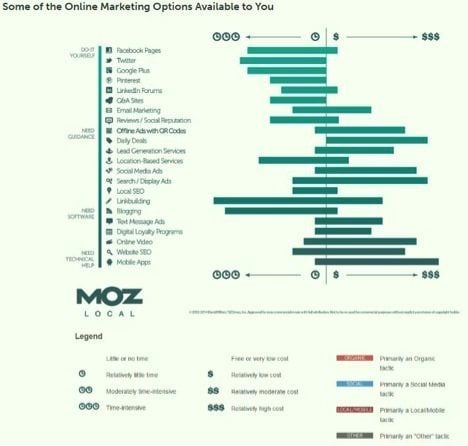You’ve spent invaluable hours developing your core product. You’ve hired people you’re extremely confident with, and you’re confident in the value of your offering to the consumer—so confident you stake everything on it. But your business flops. What happened?
The big blunder, the mistake that can sink a business, is a failure to adapt. Today’s marketplace demands agility. You may be offering a product or service for the digital age, but your brand must be unfailingly organic.
Recently, I spoke to branding and marketing expert Matthew Kinsman. He’s the founder of a successful international agency called Base Creative, and has some insights about an agile approach. Essentially, he says data obtained from market research has a three-month “half-life,” quickly becoming irrelevant. The solution to becoming irrelevant is to do research and create the marketing campaign at the same time.
I was curious to hear more, so I spoke to Kinsman via email. He recommends rapid prototyping, which is “a series of brainstorming sessions in which the key components of a brand, such as brand strategy, brand identity, key selling messages, etc., are prototyped in real-time, reducing the ‘brand strategy’ timeline to weeks rather than months.”
Rapid prototyping
Rapid prototyping is a parallel, as opposed to linear, approach. That means all aspects of branding happen side-by-side.
One aspect of this is research. Begin by benchmarking a single company in your niche, one you’d like to overtake, and do your best at matching them. This will give you some very specific things to aim for, and instill competitiveness.
During the prototyping process, involve all key decision-makers simultaneously. This goes toward creating beta versions of your brand’s strategy. You’ll want to pin down visuals and messages at the same time as you’re developing strategy, as well as researching a competitor and your target audience. Together, all these facets will influence each other.
While you’re working on crafting your brand, consider the psychology behind developing brand loyalty. The following influence people’s perception of your brand:
- Color: as Raj Gill points out, colors create moods and feelings the audience associates with your brand
- Wording: people tend to prefer expensive-sounding names for products; Kinsman also points out that verbal content should explain the process and success of what you have to offer
- Inclusiveness: create a sense of belonging and achievement with your messages
- Experience: the appearance of your brick-and-mortar location should manifest an experience mirroring your brand
Once you’ve nailed down these elements, take the best beta versions of your strategy and test them on the market in real-time. After you’ve determined which version of your brand is most viable, it’s time to activate.
Brand activation
Brand activation is about creating a way for your audience to experience your brand. Experiential Learning Theory says that people learn from an experience by either becoming a part of it or analyzing it. Presenting someone with an experience gives them a choice: they must choose to participate or reflect. Their learning style determines their choice.
One way to create a brand experience is by throwing an event. This can be a concert, a seminar or webinar, a banquet, a fundraiser for a worthy cause, or anything else you deem the most effective for introducing your brand to the world.
For ideas on getting the word out about your event, consider Square’s checklist on how to market events. Among other methods, email marketing, social media and physical signage all help ensure you get a good turnout.
After you’ve activated your brand, the next step is to follow through with marketing.
Also on StartupNation.com: How Do Fonts and Colors Influence Your Audience?
Multi-faceted marketing
According to digital marketing specialist Robin Burton, a good marketing strategy is made up of the following:
- Advertising
- Distribution
- Market research
- Community involvement
- Media planning
- Product pricing
- Sales strategy
- Public relations
- Product promotions
- Brand building
- Reputation building
This is the full-scale approach. You can do almost all of these things online, including advertising, market research and community involvement. Online communities exist for any niche. But how do you determine where to put your money for quick results?
The truth is, there’s no single right answer to that question. This graph from Moz shows the cost-to-time-spent ratio for local digital marketing:

The social media options at the top of the graph cost very little, and you can follow through on brand activation through these outlets. Funnel the audience from your experiential activation and from your website to your social media. Post videos (live and pre-recorded), throw contests, post memes and pictures, link to blog posts and comment on news in your niche.
Being smart about marketing and branding
The smartest marketing efforts focus on quality.
According to Kinsman, “The key strategy to success on social media is creating quality rather than quantity—focusing on what people are genuinely going to find interesting.”
Through the quality approach, people will associate your brand with value. Kinsman emphasizes the role millennials play in “forcing brands to be more honest, relevant and good earth citizens.” Your brand’s image on social media must be honest and relevant, showing you care.
“If you have fewer posts, but of a higher quality, it’s much more likely one of those posts will go viral and reach an exponentially larger group than you would reach if you had focused on quantity,” he says.
Look at the highest quality marketing efforts from your competitor, and go the extra step. Key in on your audience and be willing to change marketing messages as they change. Always remember your core brand (who you are) and why your offering is truly valuable to your audience.






